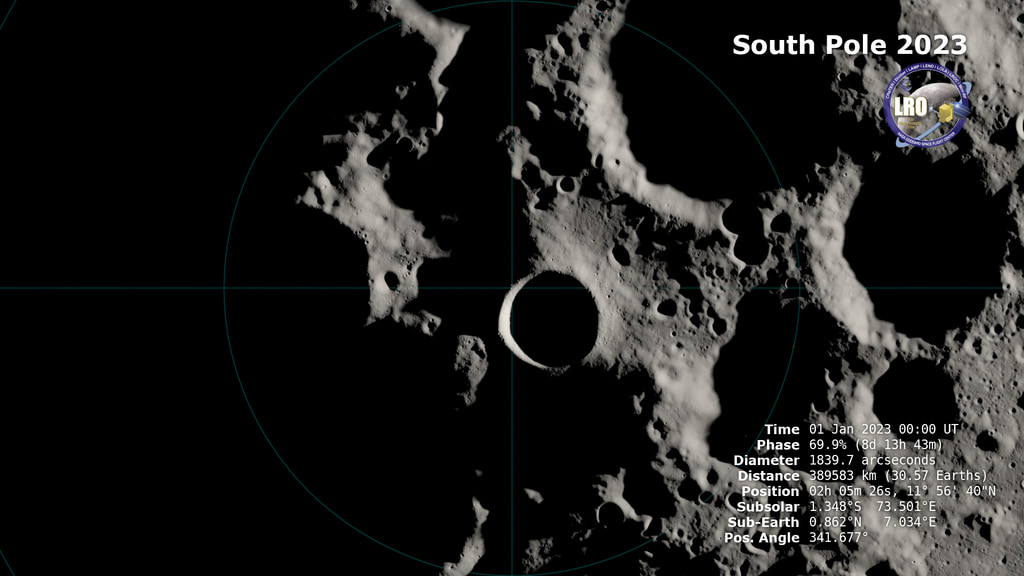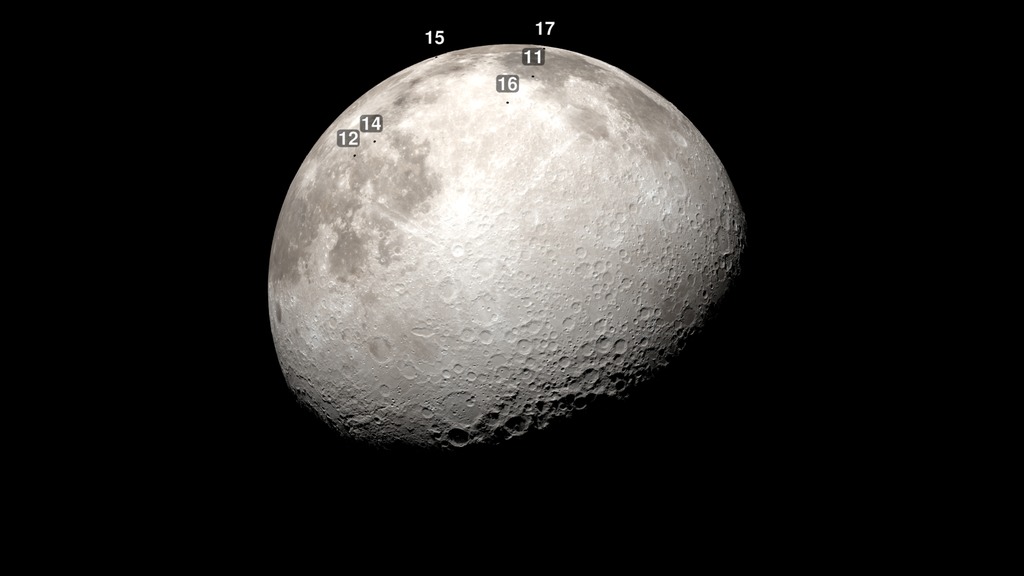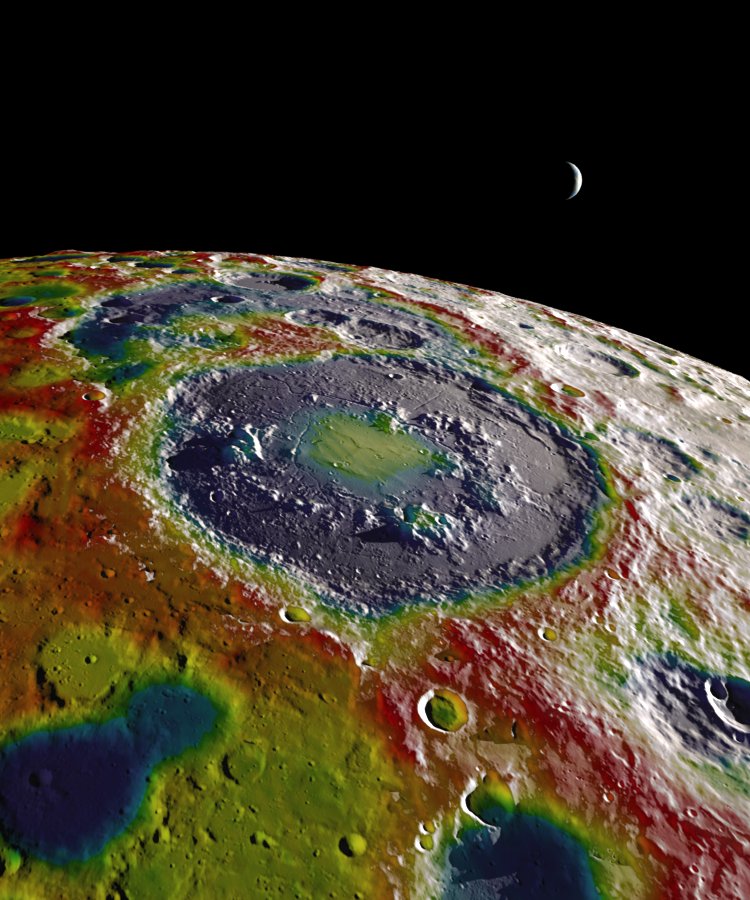Illumination at Schrödinger Basin
An overhead view of Schrödinger basin showing both the inner peak ring and outer rim. The view is centered on 75°S 133°E with a vertical FOV of 5.8° from a distance of 2 Moon radii.
Schrödinger basin is a large impact feature on the far side of the Moon, near the lunar South Pole. This visualization shows the cycle of sunlight and shadow over six lunar days from October 2024 through March 2025.
A detailed view of the interior of Schrödinger basin bordered by the inner peak ring. The view is centered on 75°S 135°E with a vertical FOV of 2° from a distance of 2 Moon radii.
Credits
Please give credit for this item to:
NASA's Scientific Visualization Studio
-
Visualizer
- Ernie Wright (USRA)
-
Scientists
- Brent Garry (NASA/GSFC)
- Noah Petro (NASA/GSFC)
-
Technical support
- Laurence Schuler (ADNET Systems, Inc.)
- Ian Jones (ADNET Systems, Inc.)
Release date
This page was originally published on Wednesday, October 5, 2022.
This page was last updated on Wednesday, November 15, 2023 at 12:18 AM EST.
Missions
This visualization is related to the following missions:Series
This visualization can be found in the following series:Datasets used in this visualization
-
DEM (Digital Elevation Map) [LRO: LOLA]
ID: 653 -
DE421 (JPL DE421)
ID: 752Planetary ephemerides
This dataset can be found at: http://ssd.jpl.nasa.gov/?ephemerides#planets
See all pages that use this dataset
Note: While we identify the data sets used in these visualizations, we do not store any further details, nor the data sets themselves on our site.


